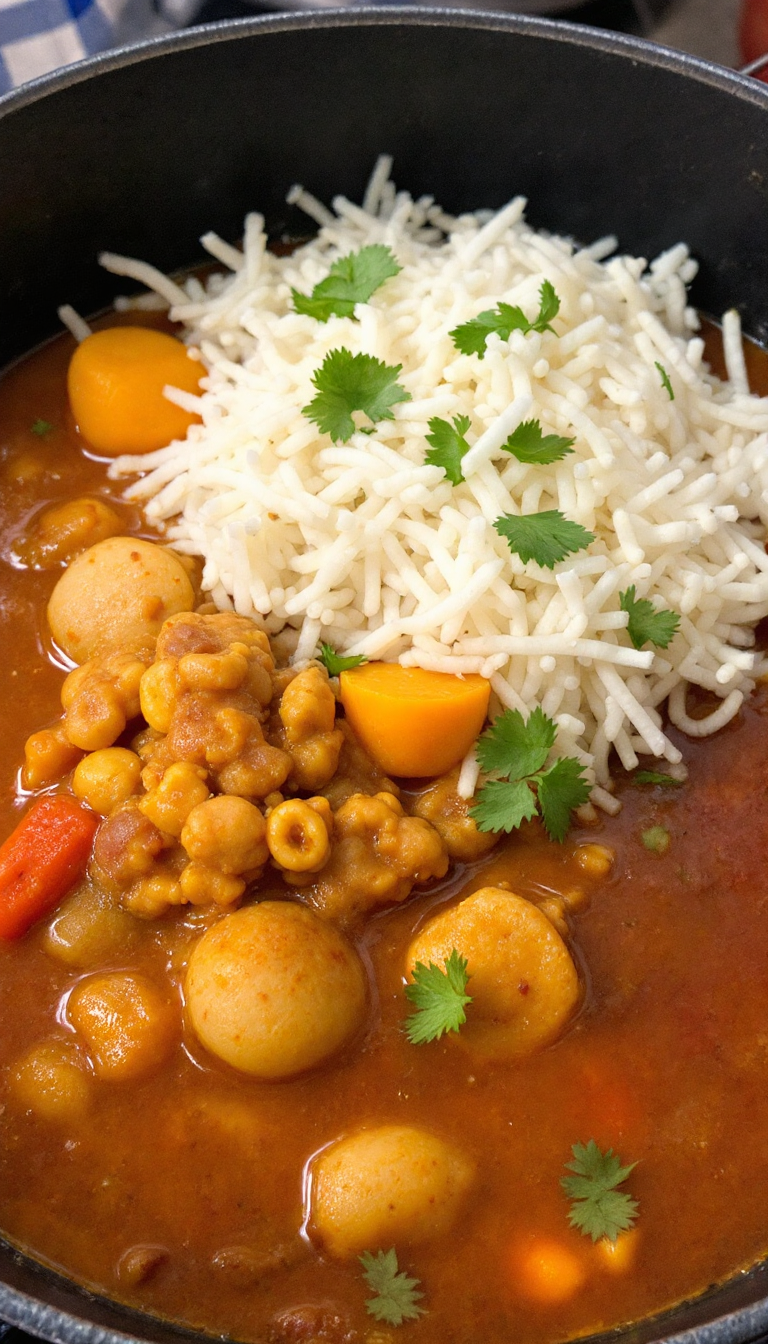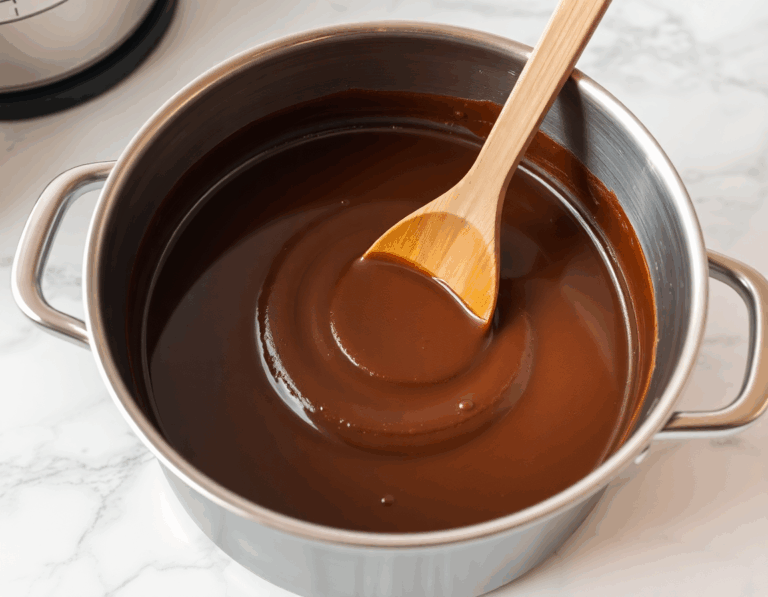Oh, the memories of a sultry Louisiana afternoon, where the air is thick with the promise of rain and the tantalizing aroma of gumbo wafts through the air—it’s an experience like no other. You see, gumbo isn’t just a dish; it’s like a warm hug from the South, brimming with a medley of spices, seafood, and sausage, each bite a story told by generations. I once tried to recreate it while listening to old jazz records, and let me tell you, the result was a delightful mess that tasted just like the bayou itself—rich, complex, and utterly captivating.
Steps
- Prepare the roux by mixing flour and oil in a large pot, cooking on medium-low heat. Stir constantly for 30-45 minutes until the mixture turns a dark brown, resembling chocolate dough. Be cautious not to burn it, adjusting the flour or oil as needed for consistency.
- Dice celery, bell pepper, onions, and parsley for the vegetables. Optionally, chop and add okra at the same time. The freshness of these ingredients enhances the gumbo’s flavor.
- In a hot skillet, arrange sausage slices in a single layer and brown them well on one side. Flip each slice to brown the other side, then transfer them to a plate.
- In the large pot, combine chicken broth, vegetables, parsley, garlic, and roux. Stir the mixture thoroughly, bringing it to a boil over medium heat for 5-7 minutes until the vegetables are slightly tender. Season with Cajun spices to taste.
- Introduce the chicken, sausage, and shrimp to the pot. Taste the gumbo and adjust the seasoning with salt, pepper, or additional broth until you achieve the desired flavor.
- Serve the gumbo warm over freshly cooked rice. The dish tends to taste even better the following day as the flavors meld together.
Ingredients
- 1 bunch of celery, diced, including leaves
- 1 green bell pepper, diced
- 1 large yellow onion, diced
- 1 bunch of green onions, finely chopped
- 1 bunch of fresh parsley, finely chopped
- 2-3 cloves of garlic
- 1-2 tablespoons of Cajun seasoning
- 6-8 cups of chicken broth
- 12-ounce package of andouille sausage, sliced into coins (Polska Kielbasa can be used as a substitute)
- Meat from 1 rotisserie chicken
- 2 cups of pre-cooked shrimp
- Hot cooked rice for serving
Nutritional Values
Calories: 462kcal | Carbohydrates: 14g | Protein: 35g | Fat: 30g | Saturated Fat: 6g | Polyunsaturated Fat: 6g | Monounsaturated Fat: 13g | Trans Fat: 0.1g | Cholesterol: 166mg | Sodium: 1073mg | Potassium: 390mg | Fiber: 1g | Sugar: 2g | Vitamin A: 928IU | Vitamin C: 19mg | Calcium: 59mg | Iron: 2mg
FAQ
- What is the difference between gumbo and jambalaya?
- Gumbo is a rich stew thickened with a roux, typically made with chicken, sausage, and/or seafood, and served over rice. Jambalaya, on the other hand, is a rice dish similar to paella, where the rice is cooked with the meats and vegetables.
- Why is the roux important in gumbo, and how is it made?
- The roux is crucial because it adds a deep, rich flavor and thickens the gumbo. It is made by cooking flour and oil together for 30-45 minutes until it reaches a dark brown color and a dough-like consistency.
- Can gumbo be prepared in advance and stored?
- Yes, gumbo can be stored in the refrigerator for 3-4 days. The roux can be made 3-5 days in advance and kept in the fridge. Additionally, gumbo can be frozen in a freezer-safe container for 2-3 months, separate from the rice.
- What meat and vegetables are typically used in gumbo?
- Gumbo commonly includes chicken, sausage, and shrimp. Vegetables often used are celery, onions, bell peppers, parsley, and sometimes okra.
- How can I enhance the flavor of my gumbo?
- You can enhance the flavor by adjusting seasonings like salt, pepper, and Cajun seasoning to your liking. Using homemade chicken broth made from a rotisserie chicken carcass can also significantly improve the taste.
Tips
- Master the Roux: Take your time when making the roux; it’s the foundation of a rich and flavorful gumbo. Stir flour and oil constantly over medium-low heat for 30-45 minutes until it reaches a dark chocolate color. This process requires patience but is worth the effort.
- Opt for Homemade Broth: For the best flavor, use a rotisserie chicken and make your own chicken broth using the carcass. While store-bought broth is an option, homemade broth significantly enhances the gumbo’s taste.
- Prepare in Advance: Consider making the roux a few days ahead of time. Store it in the refrigerator in a resealable bag for up to five days, making it easier to prepare the gumbo when you’re ready.
- Enhance with Okra: For an additional layer of flavor and texture, add chopped okra to the gumbo. Include it with the other vegetables for a more authentic touch.
Equipment
- Large, Heavy-Bottom Stock Pot – Necessary for making the roux and cooking the gumbo.
- Large Skillet – Used for browning the sausage.
- Wooden Spoon or Heat-Resistant Spatula – Essential for stirring the roux constantly to prevent burning.
- Sharp Chef’s Knife – For chopping vegetables and meats.
- Cutting Board – For preparing vegetables and meats.
- Freezer-Safe Containers – Useful if you plan to freeze leftovers.

